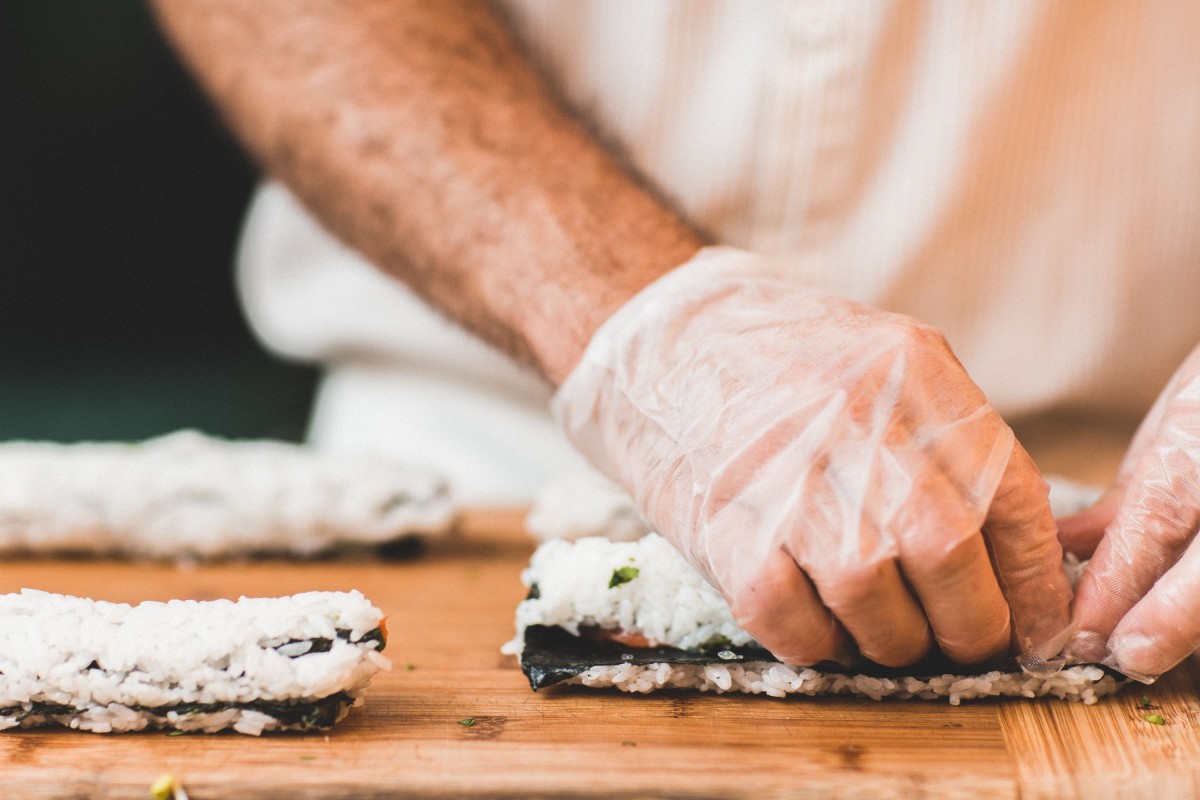
Food Handling Gloves and Safety Tips to Stay Protected from COVID-19
July 1, 2019Wearing food handling gloves is crucial in the prevention of spreading bacteria while handing food.
Statistics show that over half of food-borne disease outbreaks are related to restaurants as opposed to food consumed in the home or at school.
In many cases, the source of the disease-causing pathogen is from a food service worker that has been suffering with illness caused by food-borne bacteria or the corona virus and is not wearing the proper food handing gloves.
The hands that are doing the food handling are often the vehicle that transmits the Coronavirus from the sick worker to the food. When this contamination involves foods that are ready-to-eat, a food-borne illness outbreak can occur.
Section 3-301.11 of the 2005 FDA Food Handling Code prohibits bare hand food handling with ready-to-eat food, and requires the use of suitable utensils.
Suitable utensils can include items such as deli tissue, spatulas, tongs and single-use gloves. The Food Handling Code further recommends that bare hand contact with other foods that are not ready-to-eat should also be minimized.
Our focus will be on the use of food handling gloves for the purpose of minimizing bare hand contact with all foods. The most common questions that are asked are:
- Why is it important to wear gloves due to coronavirus?
- Which gloves should we use to protect from coronavirus?
- How do we use gloves safely?
- How do we motivate the team to wear and use gloves correctly?
Table of Contents
Why are food handling gloves so important?
Wearing gloves is obviously never a substitute for proper handwashing.
But food handling gloves do provide an additional barrier between the hands of the wearer and the food they are handling.
When used properly and in conjunction with hand washing, gloves help to provide maximum safety.
In today’s environment, it seems that we are hearing of more and more incidents of food-borne illness outbreaks and product recalls.
Your customer is more educated about food handling safety than ever before. Studies have shown that up to 77% of consumers believe that hand washing alone is not enough and would select a restaurant using gloves over one that did not. Gloves get noticed!
Which gloves should we use?
There are many different types of disposable food contact gloves available.
Getting the right glove for the task is important because you want the gloves you choose to stand up to the job.
The gloves you choose should be task-specific. Take into consideration the length of time the gloves will need to be worn to complete the task, the temperature of the environment and proximity to heat sources, and the types of food that will be in contact with the gloves.
Here are some brief descriptions of different types of food handling gloves:
- Poly: Loose-fitting gloves for light-duty tasks that require changing gloves often.
- Vinyl: Most durable, closer fitting gloves for meat processing and medium-hard tasks needing good dexterity and/or sensitivity; latex-free and suitable for use near heat sources.
- Synthetic: Form-fitting gloves for tasks requiring flexibility and dexterity. Use for delicate work requiring fingertip sensitivity. Feels and acts like latex. Ideal for latex sensitive workers.
- Latex: Ultra-formfitting gloves for tasks requiring ultimate dexterity. Use for delicate work requiring fingertip sensitivity.
- Nitrile: Form-fitting gloves for tasks requiring good puncture resistance and a high level of dexterity.
How do we use food handling gloves safely to protect coronavirus?
Get The Right Fit
Select the right size, from small to extra large. Too big and the gloves will slip and slide on the hand which decreases dexterity and can be a safety hazard.
Too small and the glove will more easily tear and break. A properly fitted glove will be more comfortable, which means that team members will wear them readily.
We recommend that you provide gloves of various types like best gardening glove, food gloves and sizes as needed to accommodate everyone on the team.
Avoid Cross-Contamination
Change gloves and wash hands between handling raw meats and poultry and handling ready-to-eat foods.
Change gloves and wash hands when you change your activity (from making sandwiches to making change), or whenever you leave your workstation.
Change gloves and wash hands any time a glove tears or becomes worn. Always wear gloves over a bandage on the fingers or hands. To remove disposable gloves correctly, grasp at the cuff and peel them off inside-out.
How do we motivate the team to wear & use gloves correctly?
- Do your team members understand the link between hands and the transmission of food-borne illness bacteria and viruses? Make sure that they do.
- Instruct your team members on which tasks require gloves and set the expectation that gloves will always be used for those tasks.
- Demonstrate how to properly wear and remove gloves and always insist on thorough hand washing before donning gloves and between glove changes.
- Do not allow food handling gloves to be stored at every work station or on every prep table.Provide the gloves ONLY at the hand sink locations. Getting your team members to the hand sinks will encourage more frequent hand washing.


These is really a good information for us, i am glad to have this article. Keep posted this types of knowledgeable articles. Thanks
Regards,
Harilal Ventures Private Limited